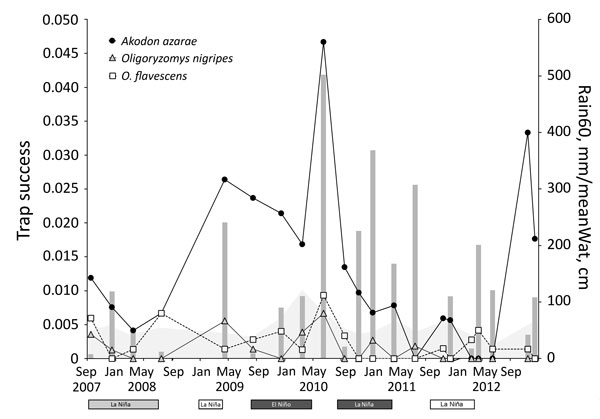Volume 24, Number 1—January 2018
Dispatch
Rodent Abundance and Hantavirus Infection in Protected Area, East-Central Argentina
Figure 2

Figure 2. Trap success (average no. animal captures/trap-night) of known hantavirus rodent host species in Otamendi Natural Reserve, Argentina (lines), monthly accumulated rainfall applying time lags of 2 months (Rain60; gray bars), and mean water level during the month before each trapping session (MeanWat, gray shaded area), September 2007–December 2012. El Niño and La Niña events and their intensities (white, weak; light gray, moderate; and dark gray, strong) are shown below the x-axis.
1These authors contributed equally to this article.
Page created: December 19, 2017
Page updated: December 19, 2017
Page reviewed: December 19, 2017
The conclusions, findings, and opinions expressed by authors contributing to this journal do not necessarily reflect the official position of the U.S. Department of Health and Human Services, the Public Health Service, the Centers for Disease Control and Prevention, or the authors' affiliated institutions. Use of trade names is for identification only and does not imply endorsement by any of the groups named above.